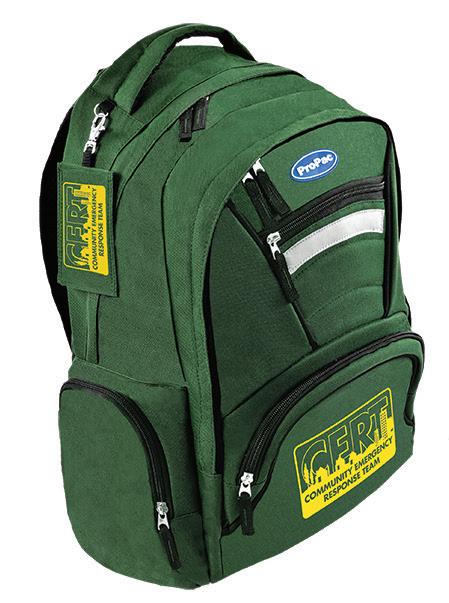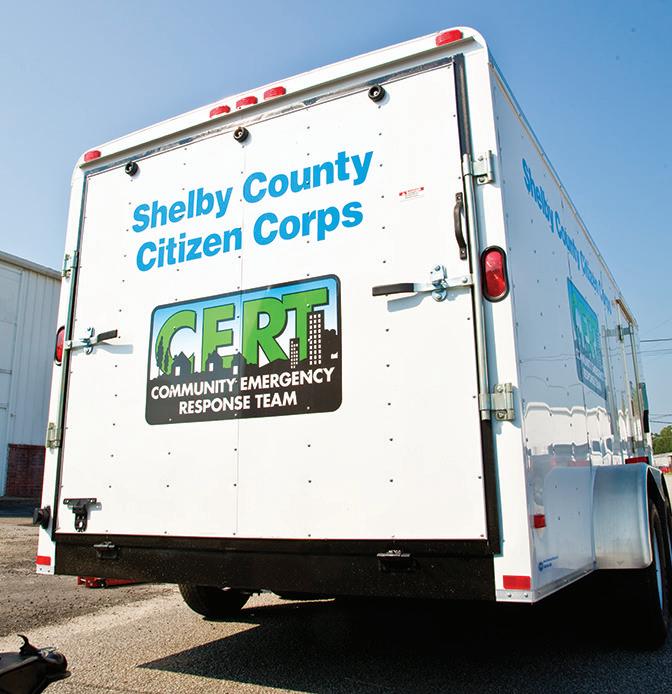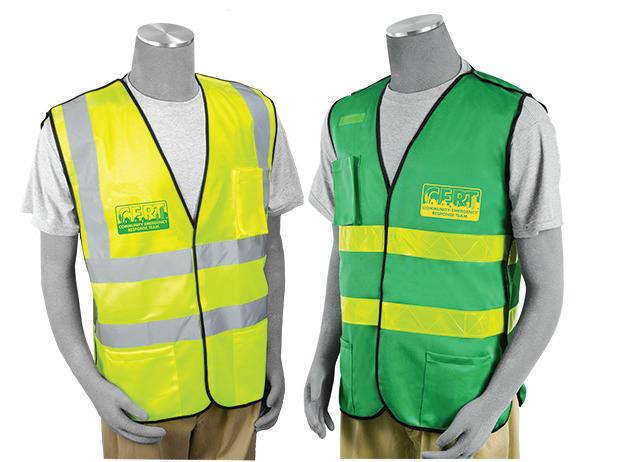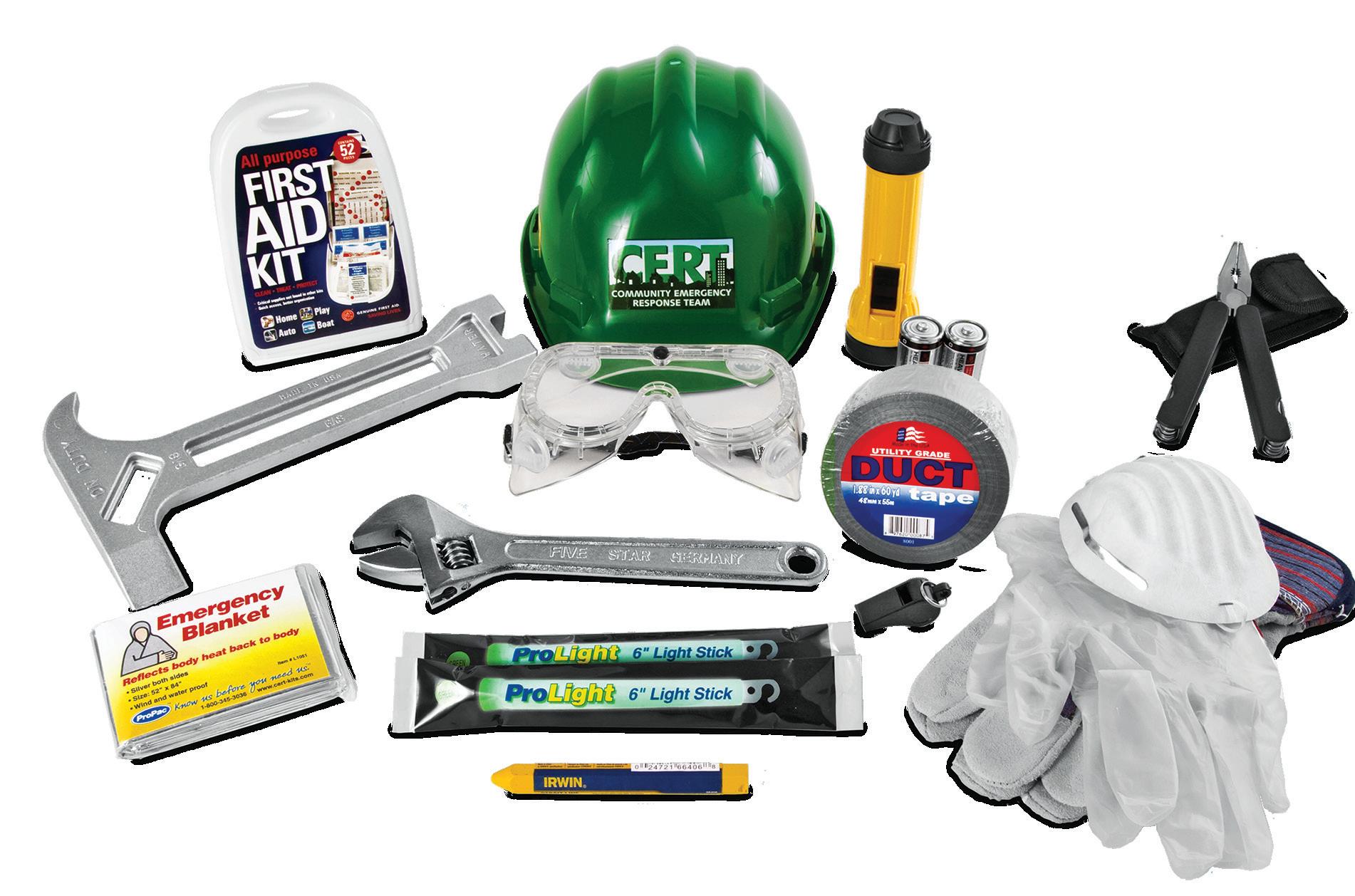



CERT Responder Magazine is dedicated to providing CERT and first responders with information and tools to assist communities in times of crisis, as well as offering a platform for responders to share their stories.






CERT Responder Magazine is dedicated to providing CERT and first responders with information and tools to assist communities in times of crisis, as well as offering a platform for responders to share their stories.

We are pleased to present our second edition of CERT Responder Magazine.
“When I was a boy and I would see scary things in the news, my mother would say to me, ‘Look for the helpers. You will always find people who are helping.’” Mr. Fred Rogers
We want to thank you for sharing your stories, training and other information related to the CERT community. Our goal is to continue to grow CERT and keep everyone updated about the newest ideas and training.
Please keep providing us with feedback, and let us know what you would like to see in future editions.
Also, we are offering a section for postings such as jobs, items for sale, items you are searching for, etc.
Finally, the mission of CERT Responder Magazine is to provide a platform for CERT members to connect across the globe.
We want to make the CERT community a wellknown entity everywhere! We will succeed with your input and support.
Cert Responder Magazine
• Store and deploy equipment essential to your mission, whether it’s disaster response, training or promoting your CERT
• Every trailer package is custom built to match your needs: many sizes, load capacities and door options available
• Trailer packages delivered with supplies secured on-board/equipment installed
• Ideal platform to store and deploy portable scene lighting, medical responder kits, search & rescue supplies, communications gear, Quick Shelter canopies, food and water
• Built-in lighting, on-board generators and HVAC available
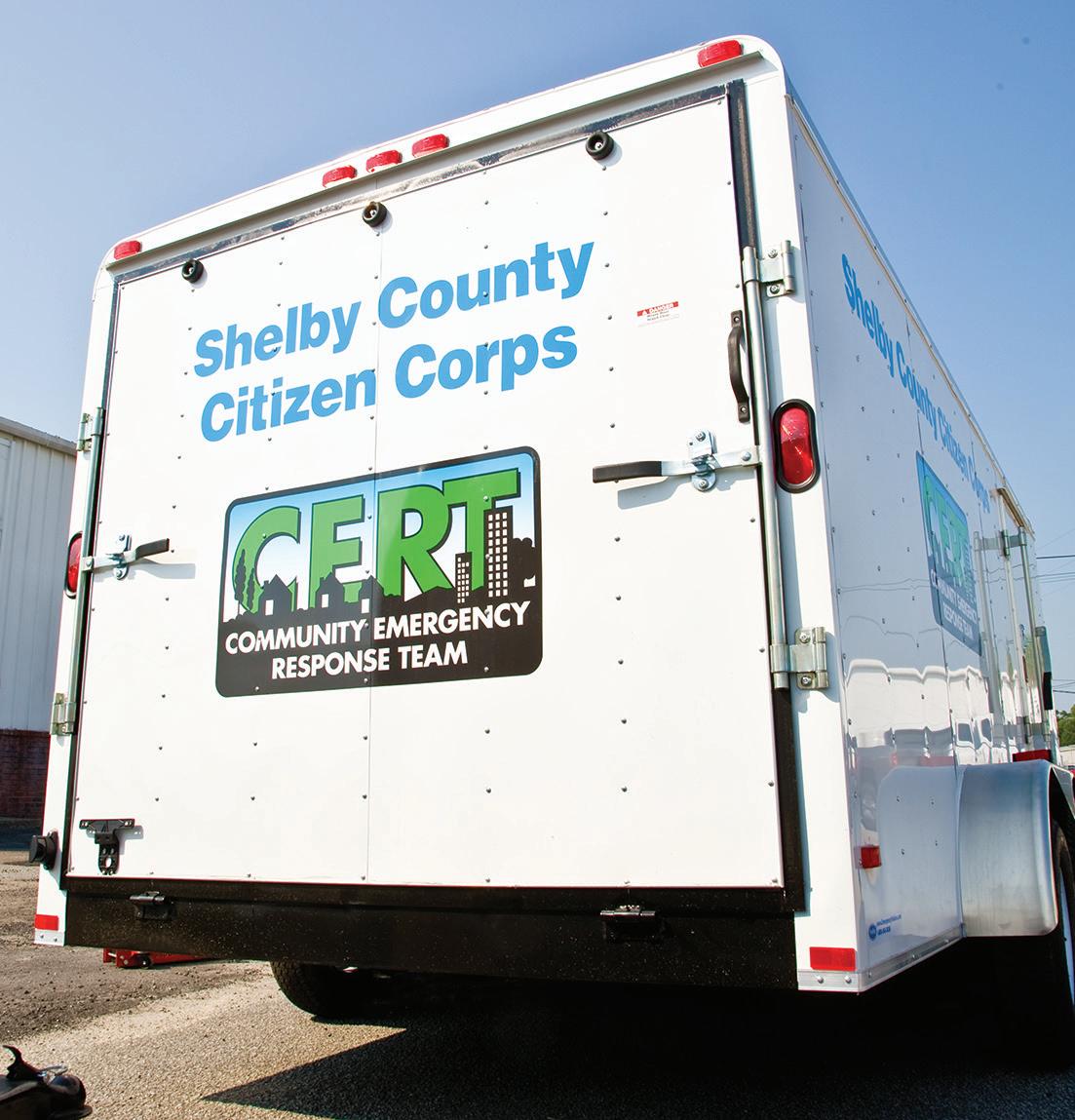
 BY LINDA SPALL
BY LINDA SPALL
It was unusually dry in Tennessee. Precipitation was down over 10 inches from the yearly average depending on where you lived. The drought had been going on for months.
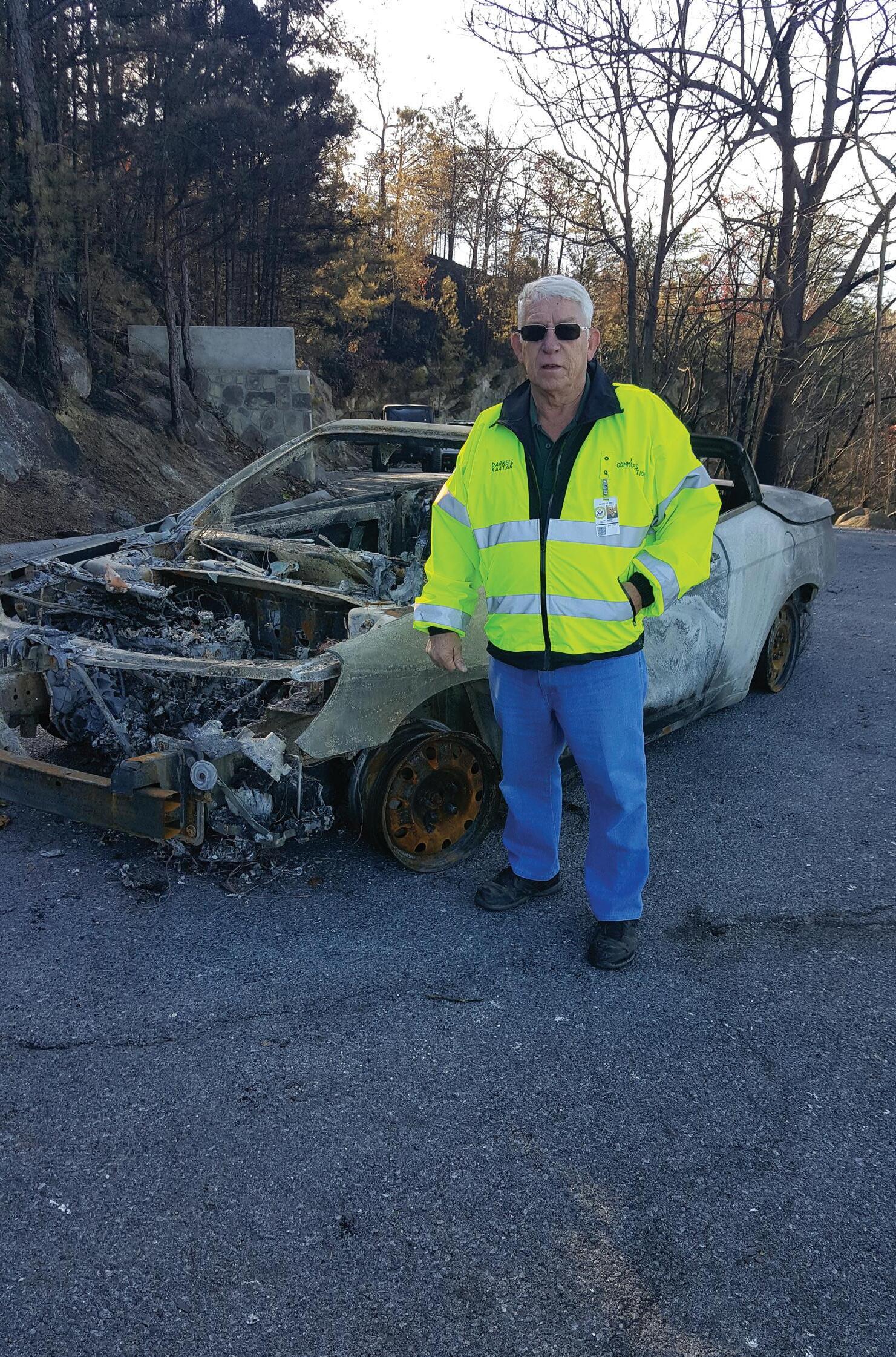
Wednesday, November 23, 2016 at around 5:20 pm, two teenage boys ages 17 and 15 were hiking up on Chimney Tops Trail in Great Smoky Mountain National Park (about 5 1/2 miles from Gatlinburg). The teens were dropping lit matches along the trail despite the “no burn” order. Thus a fire started. Slow moving, the fire was not an immediate threat. Due to the terrain, time of night and the risks involved, it was not feasible for firefighters to battle especially since the fire would probably just burn out anyway. By Saturday, the fire, burning still very slowly and had only spread to approximately 6 acres. But by late Monday, November 28, unpredictable wind gusts were over 83 miles an hour. Flying embers and blown trees crashing on power lines caused multiple fires.
Amateur Radio (ham radio) is popular not just because you can talk anywhere in the world with fellow operators, but because in emergency situations you can communicate and set up your radio equipment anywhere without depending on the internet or phone wires.
It was already dark when Darrell got to the station at about 6:30 pm and found that state and local police had already arrived. Orders were that the Command Center was to be moved to the larger location at the Rocky Top Sports World’s Stadium 5 miles away. When he arrived at the stadium, Darrell received a call from his wife. The news was bad. The Sperrys would have to quickly evacuate their home. Darrell had to leave immediately and rescue his wife and, sadly, without any time to save anything from their house. The fires were too close to home and worse, as they drove back to the stadium, they saw flames in the sky to the north, east and toward Gatlinburg and even had to drive through fire to get back to Rocky Top Stadium. .
It was then when Darrell Sperry (KA4TAR) President and Communications Officer for Sevier County under RACES (Radio Amateur Civil Emergency Service) combined with SCERS (Sevier County Emergency Radio Service) received a call. John Mathews, the Emergency Management Agency Director of Sevier County asked that Darrell report to the main fire station in Gatlinburg which was now being set up as a Command Center.
If you are familiar with ham radios, you will know that Amateur Radio (ham radio) is popular not just because you can talk anywhere in the world with fellow operators, but because in emergency situations you can communicate and set up your radio equipment anywhere without depending on the internet or phone wires. Sure enough, there was no cell phone service.
Darrell was experienced,very prepared and, of course, had his portable radio equipment. The Red Cross had already be-

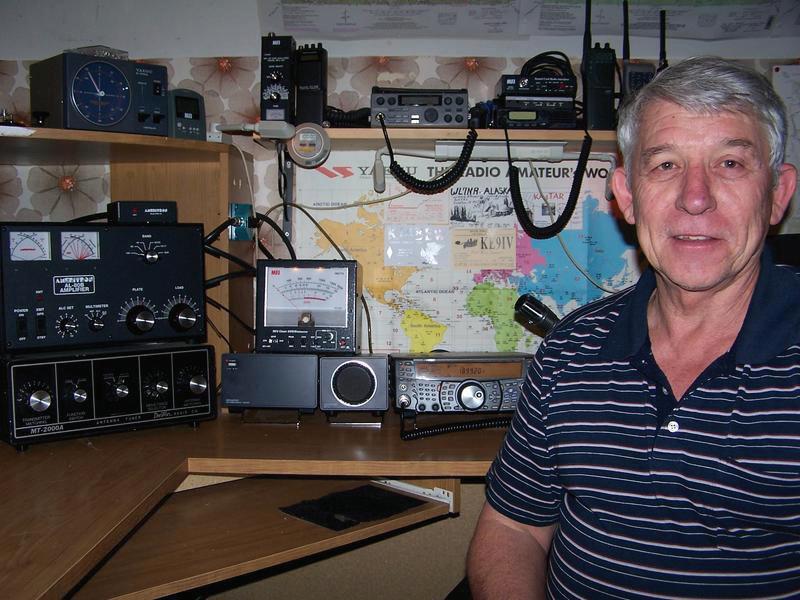
Overall, 14 people were killed, 191 injured, and 2,460 buildings were damaged and forced more than 14,000 people to evacuate and over 500 million dollars in losses.
gun evacuation procedures and Darrell set up equipment for them. He called in DannyYant (KA4OCM), another operator to handle that post. By 7:45pm, the communication van arrived and the night was spent setting up communications. The Red Cross established another shelter in Pigeon Forge. At about 6:00 am, Darrell relieved Danny and brought in 3 more operators, Jim Bradley, (KK4VUL), Roy Barnes,(KK4VUJ) and Sarge Wolfe, (N4SGT). Communications were relayed by mountain top repeaters in the area and RACES simplex radio frequency. He then braved the journey back to his home, picked up his fully equipped command trailer and drove back to Rocky Top. That command trailer which was paid with Sperry’s own funds had all the right equipment. The operators assisting from the Ham Radio Communications Group and RACES rotated hours in order to get well needed rest. Well, all except Darrell. He was there till midnight.
Meanwhile, Mrs. Sperry spent 6 days in a hotel. Darrell got to take enough time off to shower and change clothes and head back in. John Mathews requested that he and the members of RACES Communications team, to report to Sevier County Emergency Operation Center at 8 am Wednesday November 29 for Damage Assessment. He did that till the Sunday. He figures he slept about 15 hours in 6 days. The good news is that upon returning to their home, the fire has missed their house. Although homes burnt in his resort area, the Sperrys had smoke damage and no power but their home was still intact.
Electric power would not be restored several days.
Overall, 14 people were killed, 191 injured, and 2, 460 buildings were damaged and forced more than 14,000 people to evacuate and over 500 million dollars in losses. It is difficult to imagine the sacrifices and heroism of all the first responders or what further loss of life would have occurred if it were not for the rescue teams, organization, and communication which made all the difference when passing along information and operational instructions.
With more than 2000 Amateur Radio clubs throughout the country and over 600,000 radio operators in the United States and over 2,000,000 worldwide, these unsung heroes have acted in emergency situations by locating victims, dispatching, comforting, informing and participating as first responders and have truly saved many lives. SCERS and RACES are part of FEMA and through training you too can help. If you would like more information, see www.usraces. org. Darrell Sperry is certainly a great inspiration. Radio operators across the country are making a difference whether on the field or in their homes. Check it out! You might save someone’s life! CERT


With more than 2000 Amateur Radio clubs throughout the country and over 600,000 radio operators in the United States and over 2,000,000 worldwide, these unsung heroes have acted in emergency situations by locating victims, dispatching, comforting, informing and participating as first responders and have truly saved many lives.

Jay Rajyaguru is no ordinary guy! This incredible young man from Orlando, Florida is currently a 3rd year student at the University of South Florida in Tampa.
Majoring in Public Health with a minor in Homeland Security & Emergency Management, he intends to start his career in Emergency Management after graduation, hopefully working in local government, higher education, or Walt Disney World. Presently, he is interning for Hillsborough County Fire Rescue's Office of Emergency Management besides working part-time for Herff Jones! On top of all this, Jay is a CERT Instructor, Recruiter, and Media & Communications Director for USF CERT. He's also personable, smart and dedicated!
The best part about being a CERT is knowing you can help your community in both blue skies and grey skies. Being a CERT Instructor, teaching others how to care for themselves, their families, and anyone who they may be able to save in an emergency is an amazing feeling. We're growing the resilience of our community one CERT class at a time.
My greatest accomplishment is probably helping get USF CERT on the map in our community. I've developed a website www.USFCERT. com, a social media presence, and became a knowledgeable director within the program and in our community. (If you want a non-CERT related answer, hiking the Grand Canyon is definitely up there!)
For fun, like most college students, I like to go on road trips, explore state parks and nature, play video games, and socialize with friends!
The best way for the public to make our work easier, is to sign up for our CERT classes! The more people that have the knowledge we teach in class, the more people that can help us and each other during disasters.
My greatest influence is easily my professor, CERT Program Director and friend, Miss Elizabeth Dunn! She is an amazing teacher, knowledgeable disaster responder including work with the Red Cross, and great person all around. CERT
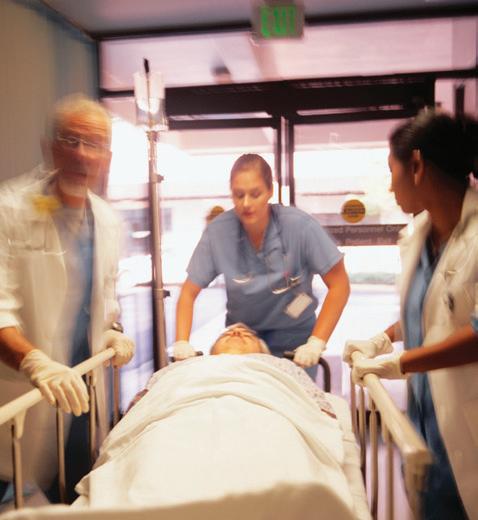


CHOOSING THE PERFECT BOOK FOR RESPONDERS CAN BE A DAUNTING PROCESS. We read for a bevy of reasons, such as entertainment, stimulation, knowledge, escape, adventure, relaxation and healing, I wonder which sort of books are most popular among our protectors on the front lines. I picked two this time as both reads are different as night and day. If you have a favorite book that you would like to share, please let us know, and we will gladly consider them for review!
Ater reading some fascinating heroic biographies and books with tales of the ins and outs, the obstacles, emotions and many sacrifices and lives of our public servants, my respect for responders is overwhelmingly emotional. You work to save citizens from crime, illnesses, catastrophic events, disasters and face the possible death of others as part of your job. One can only wonder how easily a mind can lose perspective, have the inability to “forget” and seem destined to a life of sadness and fear.
Author Heather Lende is an obituary writer in the small town of Haines, Alaska. She writes about death and more often than not, about people that she actually knew. To my knowledge, she doesn’t have the skills, training nor responsibility of saving a burning house, resuscitating a breathless body or facing a bullet. Her job is to write about the dead, in spite of whether she liked them or not, whether the family got along or at times, whether there was much to say. Amazingly enough, this simply written book is a delightful “pick-meup”. She lives in a town of less than 2,500 people that is bordered by 20 million acres of Alaskan wilderness and she writes with a neighborhood charm that makes you wish you were her best friend. From actually having to “Find the

Good” in every obituary she writes, the overall lesson she shares through her anecdotes is a much needed reminder that life is how we see it. Making the effort to see the positive can make all the difference.
Heather has a gift. She makes us think about how we will want to be remembered. She reminds us to pay attention to those often ignored beams of light in the dark.
“…suffering, in all its forms and our response to it, binds us together across dinner tables, neighborhoods, towns and cities, and even time. Bad doings bring out the best in people.”
“Look for the guys grilling hot dogs for hurricane refuges. “

“Look for the motorcycle club collecting canned goods for the food bank. “
Her accounts of the expected and unexpected deaths are told without pages of maudlin, depressing tear-jerking sentimentality. Her special writing skill is found by keeping the stories interesting, pertinent, mixing the sadness with inspiring words, a bit of humor and with a well-balanced attitude.
All in all, this is a great read when you need to take a fresh look at who you are, what you do, how you spend your time and the contributions your life has either made or will make in the world. Thank you, Heather and Algonquin Books of Chapel Hill! CERT
The prologue of The Fire Line shows a diagram which depicts the positions in which 19 firefighters, the Granite Mountain Hotshots, were found. The accompanying paragraph lists the names that correlate to each casket shape. With weariness and much trepidation, I forced myself to continue, wondering if I was truly up for a detailed story of the biggest loss of firefighters since September 11, 2001. Surprisingly, author Fernanda Santos, the Phoenix bureau chief for the New York Times, not only held my interest by relaying the events that were precursors to the fire not far from Prescott, Arizona, but she drew me into the world of wildlife firefighting. She artfully introduced me to the methods of combating the monster fires, the tools, vehicles, hierarchy of command, the pay, the perks and the dangers.
Santos checked my moral compass by giving me the awareness that as long as we migrate and build our ”retirement homes”, “vacation homes” and our “dream homes” in arid, dry desert (without adequate water) and on blustery forested hills in our climate warming temperatures, we are asking someone’s husband, son or daughter to risk their lives to save our property. A tossed cigarette, a friction spark from a passing train or a ground-touching thunderbolt can cause devastation to vegetation, animals, property and human lives. She explains the circumstances so we can understand with clarity the amazing facts and does so vividly enough that you empathize whole heartedly. After reading a section about the lack of opportunity for the Hotshots to bathe for days on end “poison ivy, ticks, gnats, snakes, spiders, smoke in the lungs, no toilet, no bed, no showers to cleanse” then on to “the gunk in ears, nails and skin” I made haste and went directly into the shower.
We learn what it takes. The lead crews that mark the fire lines so the
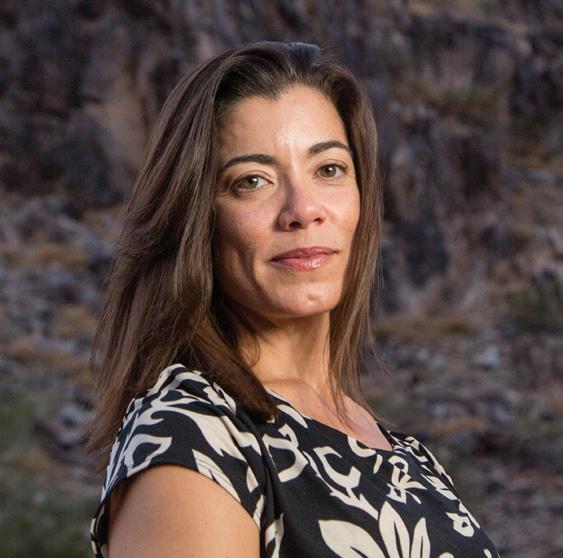
sawyers know the right brush and trees to cut, the sweepers who clear the branches, brush and timbers, the diggers and the inmates who are called to assist are all part of the front-line action. Even more amazing are the numerous agencies that depend upon one another for information or assistance such as the National Fuel Moisture Database, National Multi-Agency Coordinating Group, the National Park Service, incident meteorologists, Department of Forestry and Fire Protection, Department of Public Safety as well as police and fire departments and the Bureau of Land Management, just to mention a few. Though we know how the story will end, we learn much about the people, the decisions, the process and the drawbacks that we almost feel a part of the team. We keep reading because this world is fascinating and heroic. We are dependent on these warriors to save us in fires either structural or wild. Santos makes no judgements. We understand the sacrifices and we mourn the heroes however we also see the joy in their families, in their work and in their comradery.
This book is not just a tribute to the 19 dedicated men who died on June 30, 2013 nor is it merely a play-by-play of an unfortunate occurrence. Fernanda Santos has written a thought-provoking, factual narrative which tells us what is behind the scenes of those wild fires reported on the 6 o’clock news in the hot summer. The organization, decision-making, the odds, training, discipline, the strength of character and the dedication of everyone involved is mind-blowing. Fernanda Santos’s The Fire Line is informative, historic and inspiring.

A perfect book for CERT members, firefighting, police, EMT or simply anybody who truly loves , lives in or visits the western states. Kudos to Flat Iron Publishing and Fernanda Santos. CERT
(This book will be available in Paperback on June 6).
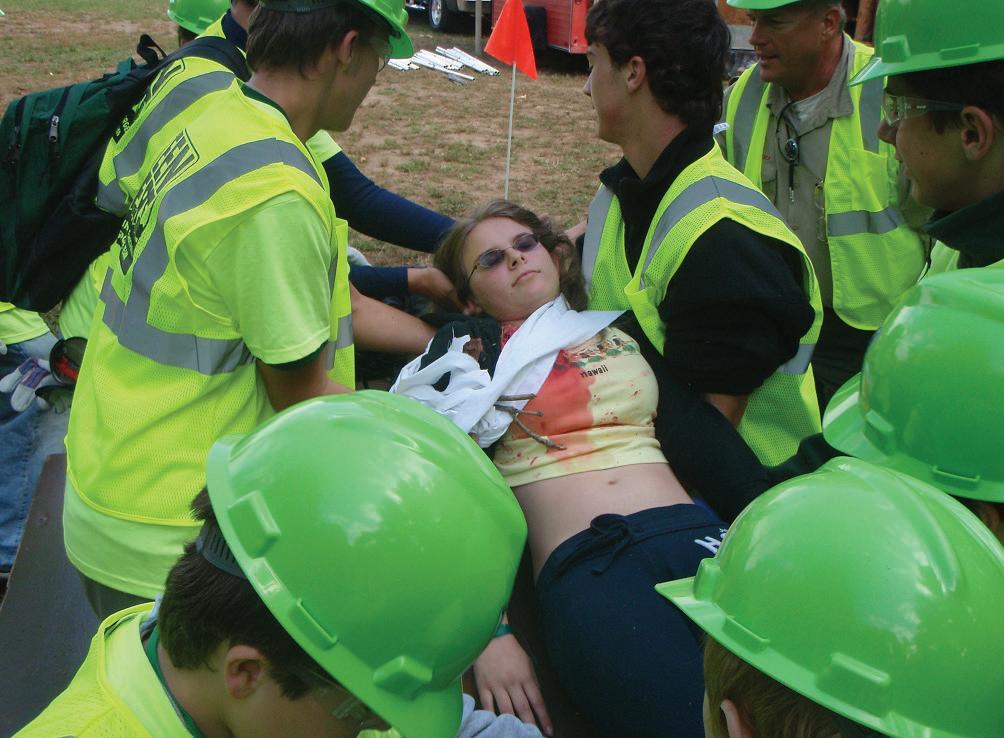
When I look back on my years as the Chairperson for the FEMA Youth Preparedness Council, my focus and goal was to promote preparedness to as many people as possible throughout my tenure. As honored as I was to have been chosen for such a prestigious role, I found that encouraging not just youth preparedness, but all preparedness, was an issue.
Youth under the age of 18 make up nearly one-quarter of the entire U.S. population and typically represent 5060 percent of those affected by disaster. During my time with the YPC, I learned that the youth are the very people who can teach their communities how to reduce the risks and impact of disasters. Young people have the ability to bring about significant change in social behavior and attitudes about planning and preparing for disasters.
Even though most communities have embraced the idea of using youth in their emergency response plans, some claim that the risks are too great to include minors in training, exercises and planning. For instance, many of the municipality-based CERTs and
Citizen Corps Council in my county refuse to work with our local TEEN CERT program and will only work with adults; some going as far as to not even recognize the existence of TEEN CERT. Minors who have learned about emergency preparedness are more confident and experience less anxiety during an actual emergency. The knowledge through programs like TEEN CERT empowers youth to act with confidence and enables them to become active participants in emergency efforts.
Another thing that I learned was that our country can be exposed to a wide variety of disasters, both natural and manmade. Much of our society procrastinates, either thinking that disasters will never happen to them, or it will never
happen in their town. Most people also assume that following a disaster, they can pick up their phone and dial 9-1-1 and first responders will arrive to help them handle the situation.
While no one ever wants to contemplate a disaster happening, the simple truth is that we are all vulnerable to becoming a victim of natural and/or man-made disasters or other emergency situations.
According to FEMA, thousands of people are affected by disasters every year. Lives are lost and property is destroyed to natural, technological and man-made disasters. Much of the devastation can be avoided with knowledge and proper preparation. There is no time to plan once a disaster hits.
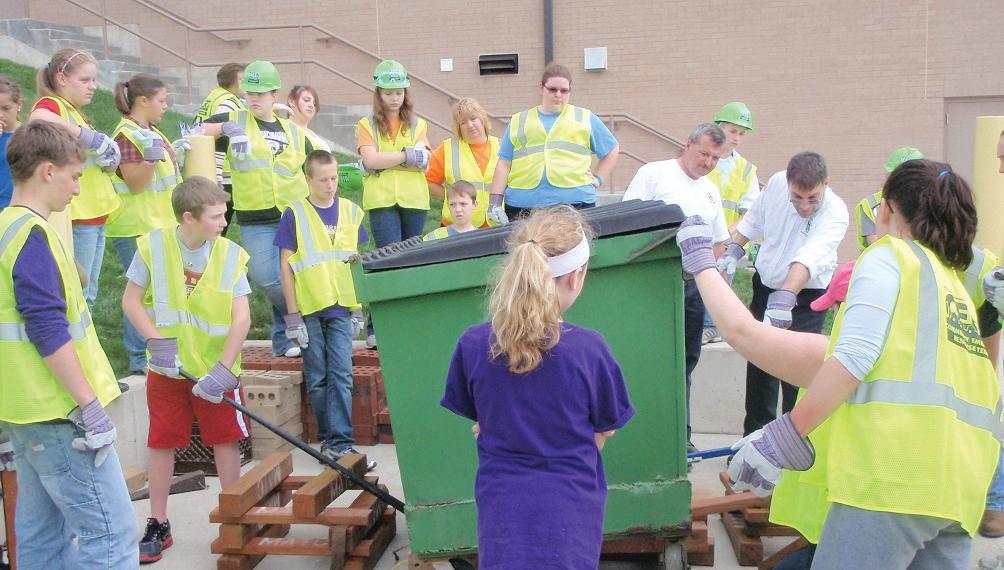
Being prepared does not mean that people will not sustain any loss. However, proper preparation can save lives, homes and personal affects, as well as making recovery much easier.
Knowing what to do during an emergency is an important part of being prepared and may make all the difference when seconds count. Emergencies can range from inconvenient to devastating. However, individuals can take some simple preparedness steps in advance of an emergency to minimize its impact on themselves and their families.
Family and community preparedness planning can enhance community readiness and reduce the impact of disaster by expediting recovery in the aftermath of unpreventable catastrophes. Emergency preparedness planning should include knowing the proper way to respond to specific types of emergency situations might naturally occur in your local geographic location. The greatest way to prepare for potential dangers is to recognize that the potential may exist.
Disasters can happen at any time, with little to no warning. Emergency first responders will be there to help following a disaster, but it may take time before they are able to get to you. FEMA suggests that you prepare to be on your own for 72-96 hours following a disaster. Being ready for any disaster is important to surviving and recovering from a disaster.
Having an emergency and communication plan, in addition to a disaster survival supply kit, will help you through almost every kind of crisis, whether natural or man-made. Remember that each type of event may require different kinds of preparation and action.
One of the best ways you can be assured of such emergency preparedness is to make sure you have an emergency plan in place. Having an emergency plan helps reduce the fear from the unknown and can help to

mitigate personal losses that might be suffered. Your first step toward creating your plan and being prepared for an emergency is to familiarize yourself of all available community resources. For instance, do you know where you can take shelter if there is severe weather? Do you know the location of emergency shelter sites in your community if you would need to leave your home?
A survival kit is also important to emergency preparedness. An emergency kit is meant to ensure that you and your family members will have all of the necessary items needed for basic survival. Your kit should include items such as a three-day water and food supply for each person, blankets, radio, hygiene items, prescription medications, flashlights with batteries, etc.
To guarantee you are always prepared for an emergency, it is crucial to look at your emergency kit every six months to update supplies, confirm medications are not outdated and food items are not expired. Making and having a complete written medical history for each person in your family is a good idea. Be sure the medical records list any allergies, medications, pre-existing illnesses, immunizations, and family history. You might not be able to recall all this information in an emergency, so add it to your medical documentation. An emergency kit will not benefit you if you are not able to use the items stored away.
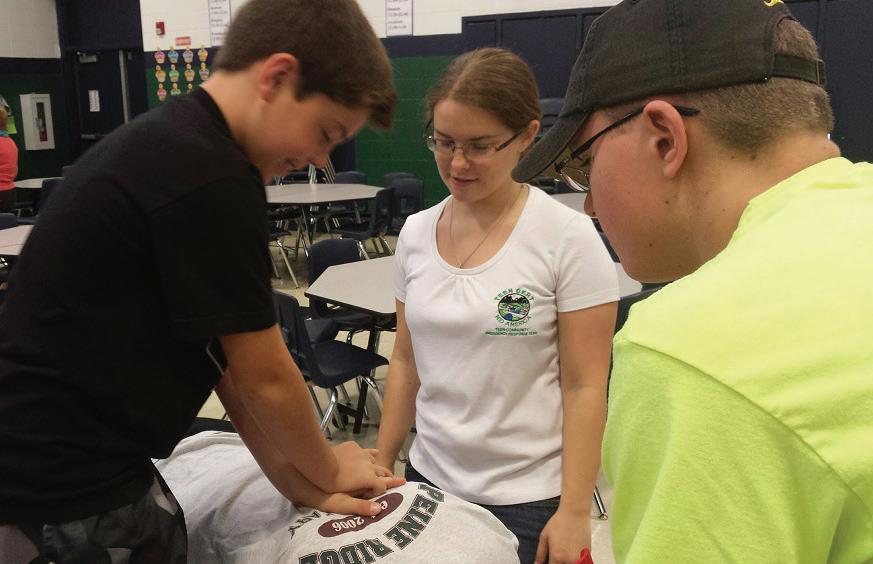
Most people in our country are not as prepared as they would like to be. It can be difficult to know where to begin and where to go from there. The important thing to remember is that preparedness is a continuous process and not a one-time effort. Make sure you are as prepared as you possibly can be for potential disasters and other emergencies that can strike suddenly, anytime and anywhere. CERT
 BY BILL HAGGARD
BY BILL HAGGARD
On Monday, August 21, 2017, the Great American Eclipse will make its way across the continental United States from Oregon to South Carolina. The total solar eclipse will turn day into night, making visible the otherwise hidden solar corona. Bright stars and planets will become visible as well. The total eclipse is truly one of nature’s most awesome sights.
The city of Herculaneum, Missouri, is located within the path of the eclipse and will experience the first total solar eclipse in the area since 1442. To celebrate this “once in a lifetime event”, the city of Herculaneum is sponsoring a weekend festival August 19 through August 21 with numerous activities planned. However, the big activity is the actual total solar eclipse on Monday, August 21 that will begin at 11:49 am and end at 2:44 pm with 2 minutes and 32 seconds of totality.
The only safe way to look directly at a partially eclipsed sun is through specialpurpose solar filters, such as “eclipse glasses” or handheld solar viewers.

The Herculaneum CERT team will be assisting the local fire department, police department and ambulance district during the festival weekend. In preparation for this event, CERT members have been conducting refresher training for the past several months in basic medical operations, triage, incident command and the prevention and treatment of warm weather emergencies. CERT members will also be involved in making sure that attendees on eclipse day will be using safe viewing practices.
Eclipse viewing safety is of utmost importance during this astronomical event. Looking directly at the sun is unsafe except during the brief time of totality, when the moon completely blocks the sun, which will happen only in the narrow path totality. The only safe way to look directly at a partially eclipsed
sun is through special-purpose solar filters, such as “eclipse glasses” or handheld solar viewers.
Homemade filters or ordinary sunglasses, even very dark ones, are not safe for looking at the sun. Partial eclipses of the sun should not be viewed through an unfiltered camera, telescope, binoculars or other optical devices. Similarly, do not look through optical devices while using your eclipse glasses or handheld solar viewers.
If you are in the path of totality, you can remove your solar filter (glasses and solar viewers) only when the moon completely blocks the sun and it gets dark. Experience totality, then, as soon as the bright sun begins to reappear, replace your solar viewer to view the remaining partial phases.
An alternative method of safe viewing of the partially eclipsed sun is pinhole projection. There are several ways to use pinhole projection and this information can be found on the internet.
A solar eclipse is one of nature’s grandest spectacles. By following simple viewing rules, you can safely enjoy the

Perryville Regional Airport with its 2 minutes 40 seconds of totality is a prime Fly-In destination for any eclipse chaser or aviation enthusiasts. With a 7,003 X 100 concrete runway this rural country airport is capable of welcoming multiple aircrafts of various sizes but space is limited. Quietly situated in the Bois Brule Bottoms of Perry County near the Mississippi River its surrounded by hundreds of acres of Missouri farmland. Just land, get out and experience the eclipse, celebrate with newfound science and aviation friends and then simply take back off to your next aviation adventure. Eclipse glasses, food, drink available on site. See our website for reservations or more information. Do not miss your opportunity to come to where the Sun and the Moon and the River meet!
Event Location: 1856 Hwy H Perryville MO 63775
Event Type: Observing Event
Event Information: Perry Co Eclipse, Solareclipseperrycountymissouri2017
For more information search for: perryville mo solar eclipse 2017
Event Contact: trish@perryvillemo.com
Community event. Roughly 1 minute of totality. Large facility, easy access, attractive for the less mobile. Mostly unsupported, but eclipse glasses will be available. Reservations may be required as capacity is limited.
Event Location: 560 Interstate Drive Wentzville, MO 63385
Event Type: Community Event Event Information: For more information search for : sccmo total eclipse in the park Event Contact: 636-949-7535; ngomer@sccmo.org
GET YOUR ECLIPSE ON ROUTE 66 FESTIVAL 8/18-21/2017
Event Location: St. Clair, Missouri 63077
Event Type: Community Event
Event Information: For more information search for : St Clair Eclipse Event Contact: jo.a.schaper@gmail.com
Total Eclipse party. Vendors, stage, telescopes. Large, flat-ground common area. No camping, but covered pavillions can be reserved for parties.
Event Location: 1795 Highway DD Defiance, MO 63341
Event Type: Community Event Event Information:
For more information search for: sccmo total eclipse in the park Event Contact: 636-949-7535; ngomer@sccmo.org
Total Eclipse event. 2mins14secs Will feature vendors, camping, inclined trails. Nearby wineries. **Reservations required.** Capacity ~ 1000 people.
Event Location: 4600 S Missouri 94, Augusta, MO 63332
Event Type: Observing Event Event Information: (636) 949-7535; www.facebook.com/KlondikePark
For more information search for : sccmo total eclipse in the park
Event Contact: ngomer@sccmo.org
All day educational event and viewing party. We will have food trucks, cooling stations, activities for kids and adults, live-streaming, and a time you will never forget.
Event Location: 712 South Main Street, De Soto, MO. 63020
Event Type: Observing Event Event Information: Will be held at the De Soto Public Library. www.facebook.com/dspl.missouri.org
For more information search for: De soto public library 2017 Great American Eclipse
Event Contact: tabdspl1935@gmail.com
Community Event with festival atmosphere all weekend and expert commentary the day of the eclipse. 2250 Old Highway A, Festus, MO 63028
Event Location: 2250 Old Highway A, Festus, MO 63028
Event Type: Community Event
Event Information:
For more information search for: cityoffestus
Event Contact: public.works@cityoffestus.org
Weekend of events leading up to Solar Eclipse.
Event Location: 1330 Swanwick street, Chester, Illinois
Event Type: Observing Event Event Information: Facebook: Eclipse in River City 2017 or search the web for: chestereclipse
Friday, August 18th Solar Fried Chicken Dinner 4:30 -7:00 pm at KC Hall, Sponsored by the Chester Rotary Chester Public Library Presents the movie Dragonslayer at 7 pm
Saturday, August 19th Dancing the Light Away with Fertile Soil Chester Eagles 8 pm- midnight Abra-Kid-Abra Magic of the Eclipse Chester Public Library Saturday, Aug. 19th 11 am
Sunday, August 20th Scavenger Hunt and BBQ Sponsored by St John & St. Mary Schools Time To Be Announced Cosmic Arts & Crafts Sale 11 am-5 pm Cohen Complex
Monday, August 21st Cosmic Arts & Crafts Sale 9 am—5 pm
Cohen Complex XMC MOBILE DJ 9 am- 3 pm at Cohen Complex Ecliptic Chic~Hair Mystique
10 am-12 pm Cohen Complex Sponsored by Uptown Barbers & Color Expression
Salon Stellar Ice Cream Social 2-4 pm
Cohen Memorial Home
Event Contact: cheterrecreation@chesterill.com


Most Floridians remember Thursday, May 4th with blue skies and calm seas. However, Emergency Management professionals, First Responders, and USF CERT Members remember a different scenario: A Category 4 Hurricane plowing through the state of Florida and the Tampa Bay Area needing our help after high winds, flooding, and rain hit the area.
Each county in Florida participated in this Statewide Hurricane Exercise, including the State EOC in Tallahassee. Newscasts were created for the exercise with Hurricane Coleman's path through Florida highlighted, as if the real thing was happening.
USF CERT was activated to assist in Hillsborough County's brand new and fully-activated Emergency Operations Center (EOC), filling important positions like seats in the different Emergency Support Functions, simulating citizens phoning in hazards in the community and attending briefings. Between the 9 USF CERT Members attending the exercise, 5 filled seats in the in the EOC and 4 played community members.
The Hillsborough County EOC's Planning Section contained 4 USF CERT Members, donning their respective vests and working with professionals in Documentation and Damage Assessment.
Four other USF CERT members controlled the Simulation Cell (SIMCELL), which was charged with making the scenario a reality for those working in the EOC. SIMCELL volunteers manned phones, calling in reports of overturned busses, fallen trees, power outages, sheltering issues, and more to the call center staff, who then directed the issues to their respective Emergency Support Function representatives in the EOC next door.
After a few hours of intense coordination between personnel in the EOC to keep Hillsborough County safe, the exercise was over. Thank you to all USF CERT Members that participated, and we can't wait to be a part of this exercise again next time! CERT

WExpressive writing is the act of writing down your daily feelings, or the emotions you experienced when you responded to a crisis.
hether we like it or not stress is a part of every day life. It is that uncomfortable, emotional or physical feeling we have when an overwhelming experience presents itself. However, stress is not always a negative thing. The biochemical, physiological and behavioral changes that occur in our body and mind when we feel stressed can be beneficial. It can “encourage” us to study for an exam, or activate our drive to finish a project on time. Stress also assists us when we need to take action during a traumatic event that requires our fast and steady response. But, it can be an overwhelming, uneasy feeling that “hangs on”, literally, for days, months or years, wearing us down by inhibiting our immune system.
Now that I have probably created a bit of stress in you by bringing up this subject (sorry), let’s talk about how we can transform some “unresolved” emotionally powerful feelings into a positive influence that benefits our physical and psychological health.
The anxiety and stress that rise when called to action, is often placed on the “back burner” of our mind. This allows us to think clearly and concentrate on the situation at hand. However, it is precisely this “backlog” of emotions that need a productive release. Talking to family and friends can be helpful, and physical exercise is usually a great way to blow off a little steam. There is another effective action we can take, and it is right there in your fingertips….writing!
Expressive writing is the act of writing down your daily feelings, or the emotions you experienced when you responded to a crisis. According to Dr. James Pennebaker, PhD, Psychologist at the University of Texas, Austin, expressive writing can boost the immune system, reduce chronic pain and help those suffering from
...the act of writing down ones feelings about a stressful event, increased physical and emotional well being.
sleep apnea. In a research study led by Dr. Pennebaker and published in the Journal of the American Medical Association (Vol281,No14), his findings confirmed that the act of writing down ones feelings about a stressful event, increased physical and emotional well being. Dr. Pennebaker’s study followed 107 patients with asthma and rheumatoid arthritis. He instructed all 107 of his patients to write twenty minutes a day, three consecutive days a week, for a period of four months. Seventy patients were instructed to write only about stressful feelings and situations they have experienced. The remaining thirty-seven patients were told to write only about emotionally “neutral” topics. At the end of the four-month period, the group that wrote about their stressful feelings showed significant improvement in reducing their symptoms of asthma, rheumatoid arthritis, migraine headaches and helped with sleep apnea.
Dr. Pennebaker states, when we write down our thoughts and feelings about stressors we have experienced, we are organizing our thoughts and helping ourselves to come to terms with what has happened. If we do not resolve stressful emotions, there is a tendency for our mind to ruminate about the situation and keep our thoughts ringing in our head like a string of echoing bells. This research study confirmed, there is a healthy response in the body and mind when we express our emotions on the written page.
If you decide to keep an expressive writing journal, and I would strongly encourage you to do so, it is important to remember that you can keep your writings private, for your eyes only, if you choose. If you cannot write as consistently as Dr. Pennebaker’s subjects, it is still a useful tool for organizing thoughts, and staying on the path of physical and emotional well-being.
It is important to remember, the power of expressive writing lies not in the pen and paper or keyboard, but in the mind of the writer.
In addition, as the 19th century playwright, Oscar Wilde, said, “I never travel without my diary (expressive writing journal). One should always have something sensational to read….” CERT


According to the Community & Regional Resilience Institute, resilience is the ability to anticipate risk, limit impact, and bounce back rapidly through survival, adaptability, evolution, and growth in the face of turbulent change”.
As a 30 year veteran of the fire and emergency services, the holy grail has always been for me to assist the communities I served to become resilient: To prepare for natural disasters such as tornadoes, floods and fire; to have individuals and groups (neighbors) be able to stand on their own for a period of time until the fire department can get to them, especially during a disaster.
To that end we have spent countless hours and hundreds of thousands of dollars training people in things like CPR, and basic first aid, but the basic underlying premise had always been: “We (the FD) are coming, and when we get there get out of our way”. The issue with the “I will just call 911 and a police officer, firefighter or medic will magically appear and solve my problem” is that it really doesn’t work that way.
When attendees at a recent First CARE Provider class I taught were asked; “what do you do in an emergency”? The answer was unanimous: Call 911! When the same group was asked “how long do you think it will take a responder to get to you after you call 911”? The most popular answer was 5-7 minutes (fig. 1).

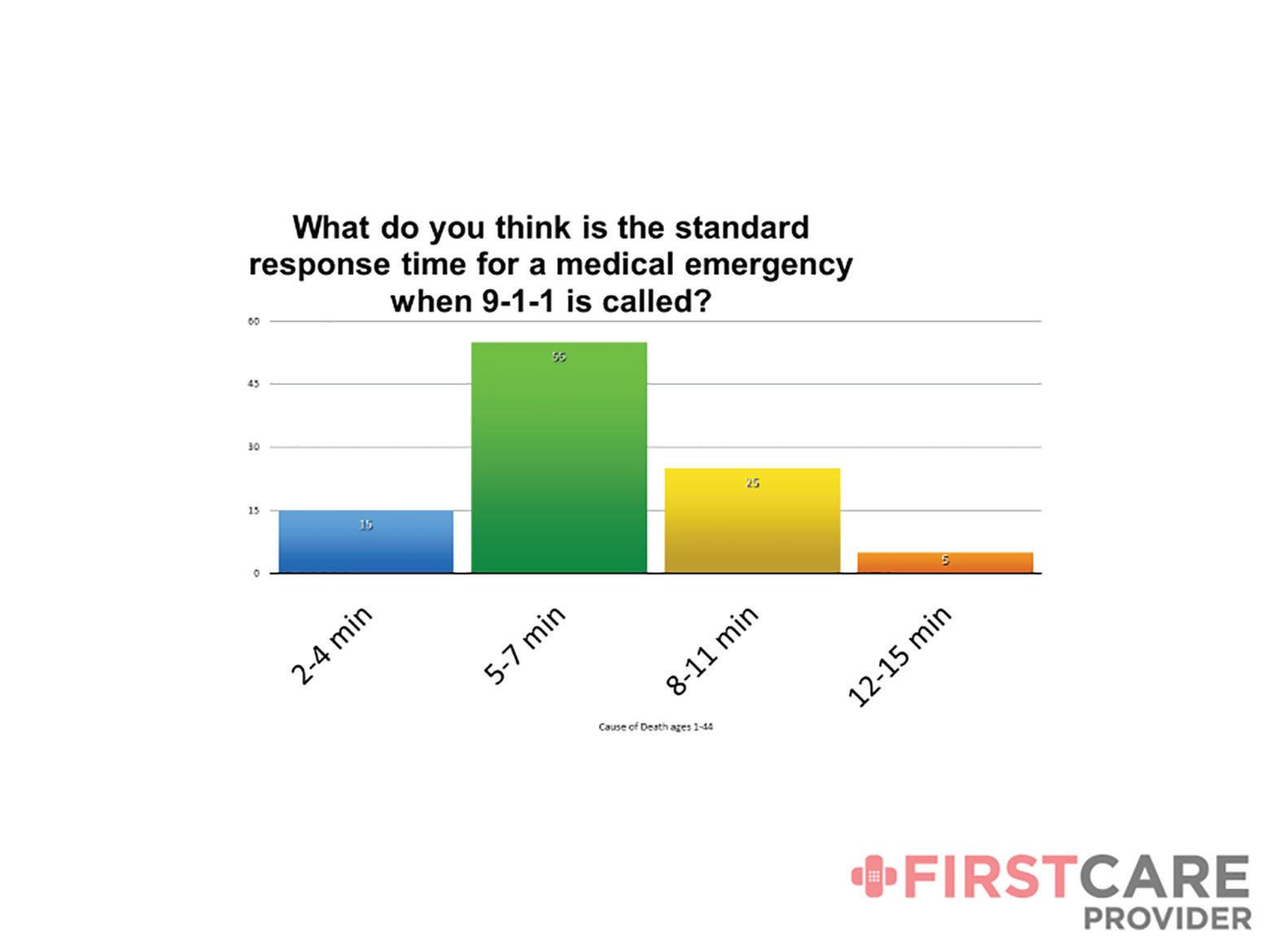
The dirty little secret that no one wants to address is that it takes as little as three minutes to bleed to death from a traumatic injury. It takes time for responders to be notified and to make their way to the scene of the emergency. When someone is dying, time is a matter of life and death.
While 5-7 minutes is certainly an acceptable response time for emergency responders in many communities, in other communities like Barrow Alaska, where my colleagues and I recently taught a First CARE Provider class, the response time could be hours or days depending on such variables as weather and distance. The North Slope Fire District is responsible for over 90,000 square miles! And while Barrow represents an extreme example of prolonged response times for emergency responders, in fact, even in a metro or suburban area response times can vary greatly depending on the scope of a disaster, the number of emergency calls resulting from that disaster and the number of responders available at any given time. The International City Managers Association (ICMA) set the acceptable rate of emergency responders at about 1 responder for every 1000 residents. That translates to very few responders when a major incident occurs like a tornado or a hurricane. As I mentioned previously, we spend hundreds of hours and thousands of dollars training people in CPR, how to use and automatic external defibrillator and basic first aid. The fact of the matter is this: An American Heart Association report suggests the incidence of out-of-hospital cardiac arrest is 326,200 annually. The average survival rate is 10.6% and survival with good neurologic function is 8.3%. http://www.sca-aware.org/sca-news/ aha-releases-2015-heart-and-stroke-statistics
Compare those statistics with those that list trauma as
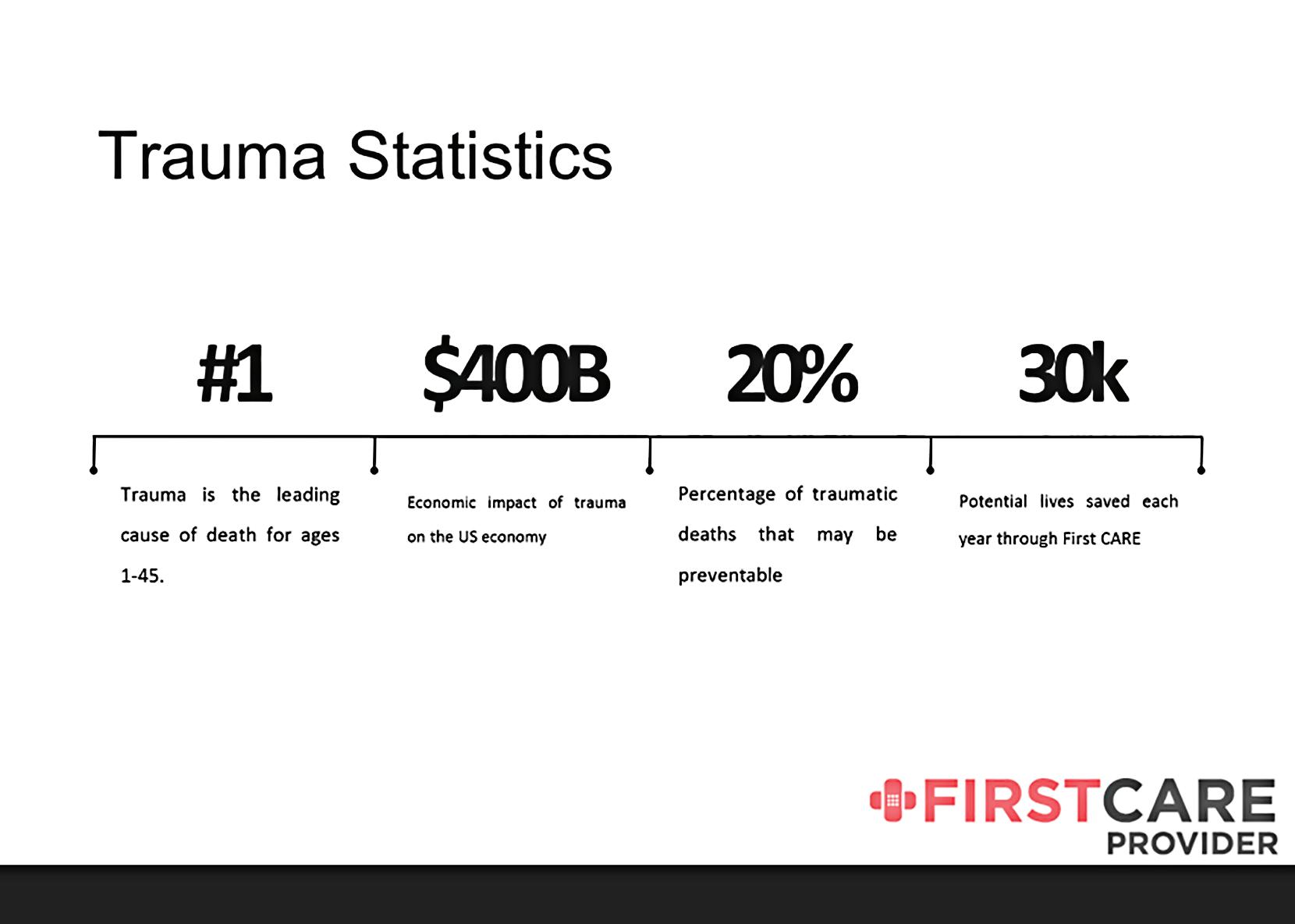
the #1 cause of death in people between the ages of 1-45 years of age, with an economic impact annually of 400 billion dollars, of which 20% are considered to be survivable with proper intervention and you are looking at 30 thousand live saved annually. (Fig2) Survivable injuries include bleeding to death (exsanguination). Uncontrolled post-traumatic bleeding is the leading cause of potentially preventable death among trauma patients [1]
In fact, if proper interventions are done within the first 3-5 minutes for such injures as critical bleeding, there is a 90% chance that the injured person will survive.
With that in mind, we get a much bigger “bang for the buck” teaching civilians to use tourniquets than we do teaching CPR.
Before the hate mails starts, I fully support teaching CPR. It saves lives. But a broader approach is needed.
To build truly resilient communities we first have to dispel the myth that emergency responders will solve all our problems. We must acknowledge that for the first 5-7 minutes in an emergency the true first responders are the people who are present at the time of the incident.
Teaching those First Care Providers to deal with traumatic injuries such as critical bleeding will save lives and empower those who receive the training to make a difference rather than just calling 911 and hoping help arrives in time. One thing I have learned over the past30 years is that hope is not a plan.
I am not advocating that people sitting at home see or hear a story about a bus accident and leap from their chairs to go render aid. I am talking about teaching the people who may be on that bus sitting next to their child or
The fact of the matter is this: An American Heart Association report suggests the incidence of out-of-hospital cardiac arrest is 326,200 annually. The average survival rate is 10.6% and survival with good neurologic function is 8.3%.

To build truly resilient communities we first have to dispel the myth that emergency responders will solve all our problems. We must acknowledge that for the first 5-7 minutes in an emergency the true first responders are the people who are present at the time of the incident.
spouse or friend to act and to save that loved one’s life.
We as emergency responders have to get past the idea that we are the only ones who can help in these situations: Civilians with a modest amount of training can make a difference when it comes to traumatic injuries such as critical bleeding (tourniquets and wound packing), airway obstructions(recovery position) and breathing problems resulting from trauma (chest seals).
Through a series of exercises held during First Care Provider training sessions we have found that average people with as little as a half day of training are almost as effective as trained responders in recognizing critical issues like bleeding, and intervening (fig3)
In summary; to be a truly resilient community we much teach people how to rely on themselves in the critical first five to seven minutes it takes for the even the most robust response systems to reach the victims of traumatic injury. First responders have to start looking at their residents as force multipliers instead of hapless bystanders that need to be moved out of the way during an emergency. As emergency responders we have to pop the illusion that we will always be there in time to make a difference. We have to acknowledge and prepare of citizens for the reality that in a time of a wide spread crisis like an earthquake or a tornado, or severe weather or even the fact that we have large areas to cover and not enough resources to cover them all in that five to seven minuet window, that with a modest amount of training those that are first there can provide meaningful and effective first care. CERT
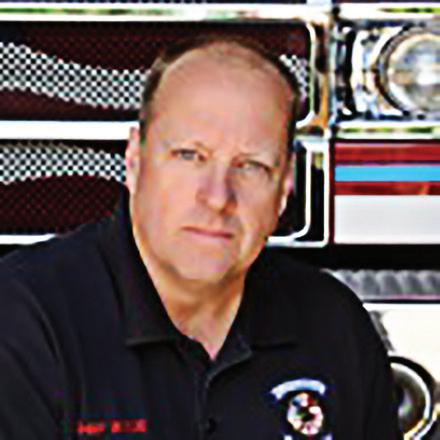
Chief Wylie has been in the fire service for 30 years serving first as a volunteer firefighter and then as a career firefighter, rising through the ranks to become the Fire Chief of the Cottleville FPD in St. Charles County, MO in 2005. He is a graduate of Lindenwood University (84’) The University of Maryland Staff and Command School (96’) and the National Fire Academy’s Executive Fire Officer Program (2000).
During his tenure, Chief Wylie has served as director of the St. Charles/Warren County Haz Mat Team, and President of the Greater St. Louis Fire Chief’s Assoc. He currently serves as the President of the Professional Fire & Fraud Investigator’s Assoc. Additionally he has been an appointed member of the Governor’s homeland security advisory council, and is a current board member of the State of Missouri’s Fire Education and Safety Commission as well as immediate past Chairman of the St. Louis Area Regional Response System (STARRS). Rob has served as a Tactical Medic/ TEMS Team Leader with the St. Charles Regional SWAT Team for the last 20 years and serves on the Committee for Tactical Casualty Care’s Guidelines Committee. He has recently joined the faculty of the Counter Narcotics and Terrorism Operational Medical Support (CONTOMS) program through the Dept. of Health and Human Services in Washington, DC. He also serves a board member of the First CARE Provider Foundation
[1] World Health Organization: cause-specific mortality and morbidity. http://www.who. int/whosis/whostat/EN_WHS09_Table2.pdf
Cothren CC, Moore EE, Hedegaard HB, Meng K. Epidemiology of urban trauma deaths: a comprehensive reassessment 10 years later. World J Surg. 2007;31:1507–1511. doi: 10.1007/ s00268-007-9087-2. [PubMed] [Cross Ref]
Rob is a certified instructor through the Missouri Police Officers Standards Commission (POST), the Department of Homeland Security’s Center for Domestic Preparedness as well as Missouri State Fire Marshall’s Office and teaches regularly at the state, local and national level on leadership, counter terrorism and tactical medical support of law enforcement operations. He is featured regularly on FireRescue1.com.
“Uncontrolled bleeding is the number one cause of preventable death from trauma.”
No one should die from uncontrolled bleeding. Due to the increase in active shooter and intentional mass casualty incidents, we need to be pre pared. The goal is to improve mortality and stop the bleed ing when seconds count.

The American College of Surgeons committee agrees that we can pre vent and save lives by using tourniquets. Multiple communities and disciplines are using these devices. If you are a gas station, work, or just the local bakery, are you prepared?
If you are in the military, homeland security, law enforcement, fire, EMS or a local CERT member helping out in a natu ral disaster then you need to be prepared today. Ensure you own safety is the number one priority. Second, the ABC’s of bleeding acronym stands. A- Alert; call 911, B – Bleeding; find the bleed ing injury, C – Compress; hold pres sure on the site of injury by covering the wound or applying a tourniquet if bleeding doesn’t stop. CERT

The only thing more tragic than a death from bleeding... IS A DEATH THAT COULD HAVE BEEN PREVENTED
Critical One Tactical in Saint Peters, Missouri will help you train and be ready to stop the bleeding. Learn what everyone should know after an injury occurs. Critical One Tactical EMS offers a Bleeding Control or B-CON classes. They can also provide you with tourniquets your team will use to save lives. For more information visit at www.c1tactical.com or call the training specialist at 636-387-7150
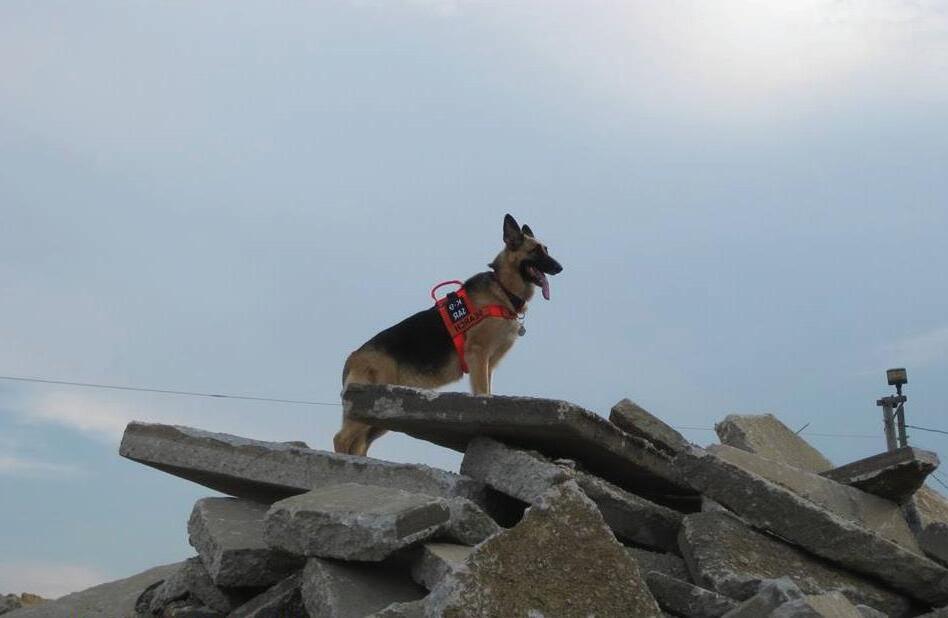
Asudden wind, strong enough to blow buildings off foundations, an unexpected 30 second earthquake, a bomb, an avalanche, a building explosion or a rushing flash flood or fire can destroy a community and we, as first responders, do our jobs. We can follow the cries for help but cannot always see or hear the buried lost victims and for this, the Search and Rescue dogs arrive.
Throughout the country, K-9 support teams are on call to assist in locating lost, missing, trapped or buried victims. Certifications are challenging for both the dogs as well as the handlers calling for hours of expensive training, stamina and dedication. Bill Miller, Founder and Operations Director of Disaster Dogs of Illinois (DDI) a volunteer not-forprofit organization, definitely has what it takes. As a former Fire Chief, Captain and paramedic, he is also a US Army combat vet with over 33 years of Fire and emergency services. Experienced in heavy collapse rescue operations, he is the right material to train Search and Rescue dogs. He is presently the handler for three very special Urban Search and Rescue dogs, Echo, Lilly and Ivan. When in Oklahoma City taking a
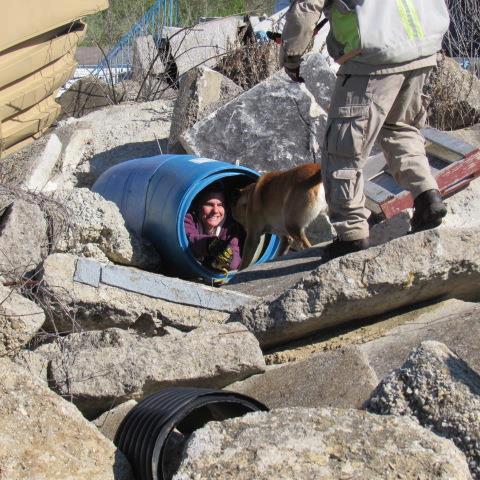
disaster course which taught how to find buried victims beyond concrete barriers, such as walls and floors, Bill labored using a jackhammer to make a hole to find any “survivors”. After much effort to get a hole big enough, someone came in with a Search and Rescue Dog and in less than 5 minutes, the survivors were found. Not long after, Bill got a dog! General dog training is obviously not enough when it comes to Search and Rescue (SAR). The National Association for Search and Rescue implements the standards from various other not-for profit organizations such as the National Fire Protection Agency as well as government agencies including the Department of Homeland Security and Federal Emergency Management in order to educate and offer courses in
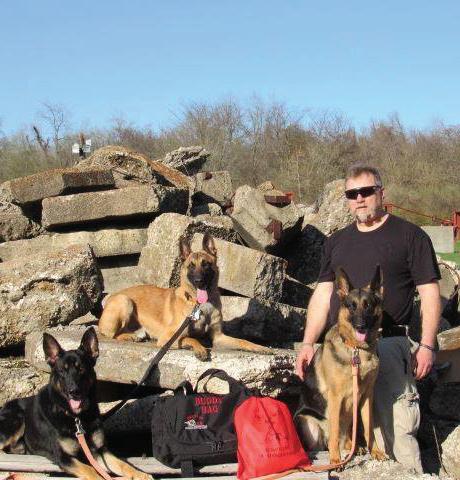


SAR techniques.
The curriculum is tough. Starting with “Introduction of Search and Rescue”, the lessons, course levels and areas of study become more defined. Tracking, Hazardous Terrain Skills, Land Navigation, Patient Transport, the Preservation of Evidence, Discriminating Scents, Night searches, Rescue Equipment, Lost Person Behavior are just a few of the offerings of their educational program. Handlers and dogs must prove themselves worthy to instructors and evaluators by passing written tests, actual course work, as well as being judged on the relationship between handler and canine, attitudes and following instructions.
Handlers and dogs must prove themselves worthy to instructors and evaluators by passing written tests, actual course work, as well as being judged on the relationship between handler and canine, attitudes and following instructions.
Training a dog with proper certification requirements, combined with upkeep, medical, food, and boarding costs approximately $10,000 dollars which doesn’t include the vehicles or equipment. DDI also provides handlers with the proper gear and $1000 worth of required clothing (not included the boots). Funding comes from donations or grants, both public and private, various charities and other not- for-profits. When called to duty, some local police, fire or public safety agencies will donate as a thank you. Further help comes from appearances at local pet stores once or twice a month to solicit for donations.
Calls for help can come from individual families, from police, fire, from Emergency Management agencies or from the
Illinois Search and Rescue Council which is a clearing house for all the SAR groups available through the state. Which dogs are called will depend on their individual certifications and the needs of the emergency. As an example, a search in the flooding waters in the Melrose Park Illinois area Cook County Police used 7 cadaver dogs.
According to Bill, any breed of dog can be trained but many factors decide their capabilities. Many times dogs can exceed in some parts of the training but not in others. Temperament and stamina, attention span, how they handle stress, strangers or unfamiliar places are just a few of the personality factors to consider. Will they go anywhere for its toy? Some dogs are just natural born search dogs! Normally it will take from 18-20 months to get a certification. Bill’s dog Ivan, a Belguim Malinois only took 6 months! He has completed all three levels of agility and obedience! Some dogs can make the grade but those who don’t excel in all areas may still be able to still use their skills. A dog may not be able to handle a rough terrain of rubble, but they can detect scents in a crowded airport terminal. The most popular breeds to excel in SAR are German Shepherds, Black or Yellow Labs, Australian Shepherds, Golden Retrievers and Belgium Malinois. Training is best between 12 and 16 months old.
Calls for help can come from individual families, from police, fire, from Emergency Management agencies or from the Illinois Search and Rescue Council which is a clearing house for all the SAR groups available through the state.
In September, 2016 a woman in Spring Valley Illinois was missing. After the body had been found in a grave in the front yard of a house by a K-9, the police were able to find the murderer.
Lilly, NASAR certified Land Type III Human Remains Detection canine. another of Bill’s dog, has quite a nose. Working on her Water Certification, she can detect a human body in the water while standing on the shoreline. In a graveyard from 1806, where the caskets had long ago disintegrated and there were 8 unmarked graves with 200 year old bones, Lilly found them all.
So what’s next for DDI? They have just purchased two John boats with Lilly’s Water Certification in mind. More K-9 teams, a mobile ops center and K-9 support vehicles. Eventually the goal is to have 3 Task Force teams, one in north, one in central and on in the south in order to answer any call within a 3 hour time frame to anywhere in Illinois.
Most importantly, the dogs acquired by DDI are dogs who have been sheltered, rescued, abandoned or unwanted by their owners. When retirement comes or for some reason, the dog isn’t a good fit, DDI has a “Care for Life” program. DDI makes certain the special dogs have special care throughout their life. Some dogs are placed with other agencies, letting the dogs continue to work if able to do so; for example, in narcotics, explosive, customs and other service type jobs. DDI commits to the care of these special dogs throughout their entire life. CERT

If you would like more information or would like to donate, please check out their web site at www.disasterdogsofillinois.com.













• Teams from all 50 states rely on ProPac.
• Our kits are the product of over 20 years of feedback from responders.
• Manufacturer direct quality control
• Kits for every need and any budget
• Custom logo imprints available
• Custom kits can be built to your specs
• Quantity discounts available
